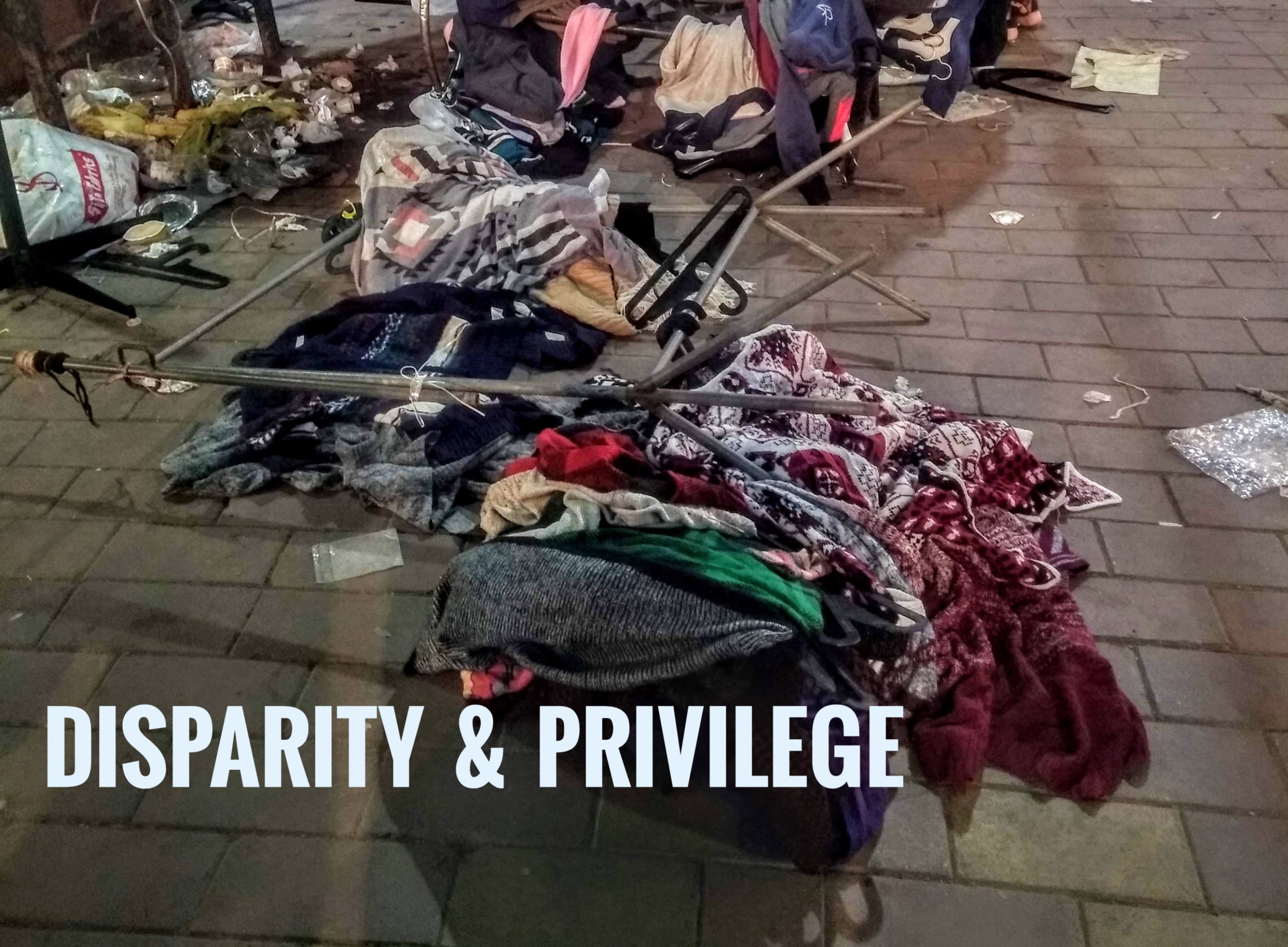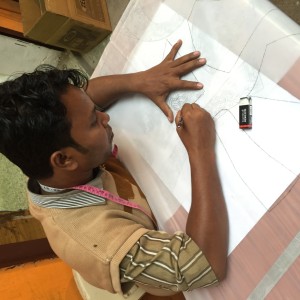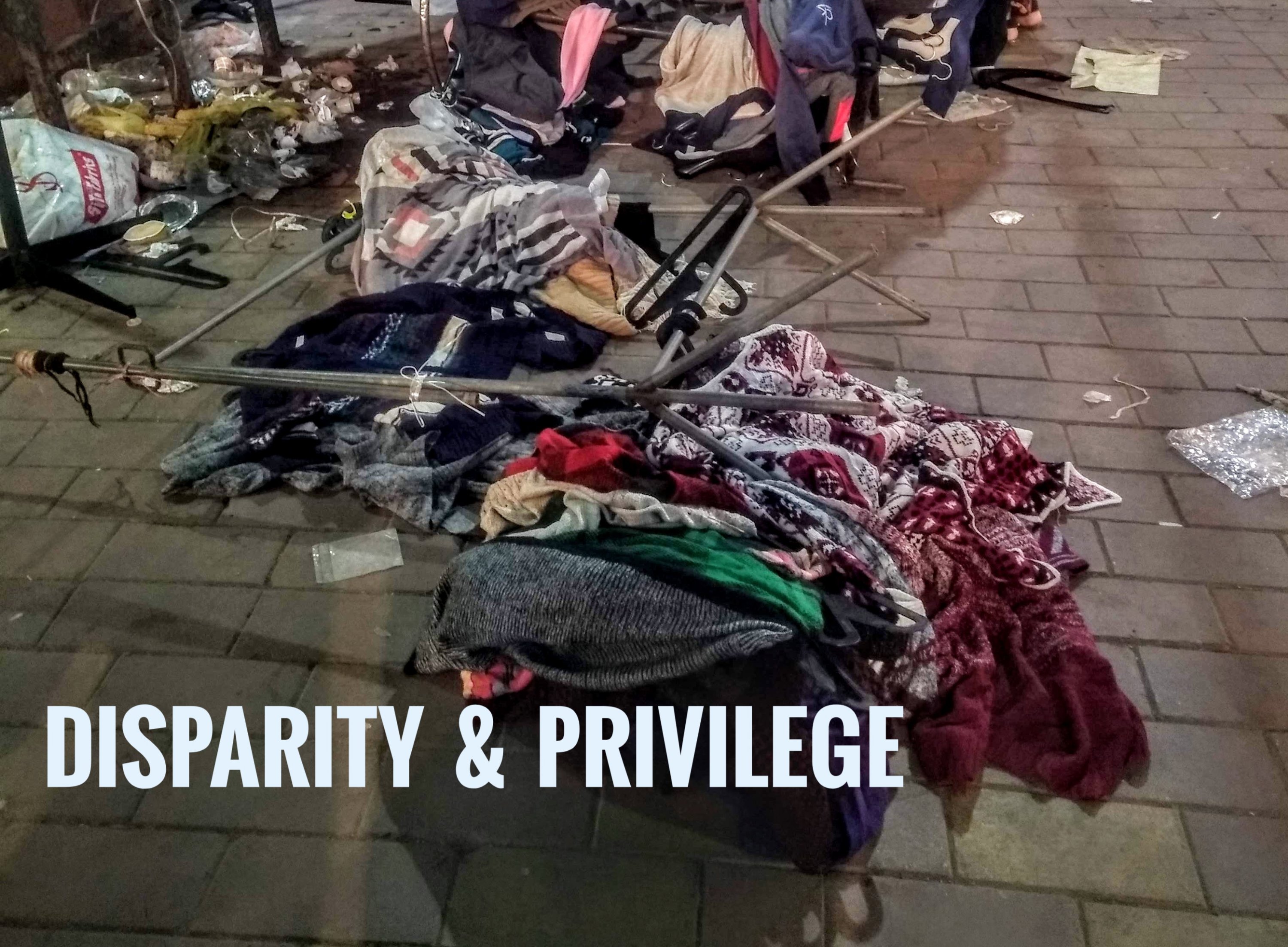
At Lajpat Nagar, yesterday my daughters witnessed something for the first time.
Policemen thrashing and beating street hawkers and vendors, and throwing away their belongings. Within a minute the buzz in the market disappeared. As, a lot of vendors quickly fled the scene with their belongings. I knew everything would be back to the normal soon.
But, for my daughters this was something shocking, and something which should not happen to anyone. I could notice their sad and confused faces, and I also prepared myself for some new questions. I decided to introduce two new words to my younger daughter:
Disparity and Privilege.
I told them that the world doesn’t give everyone a fair chance. We belong to a lucky and privileged lot. This hawker who was being beaten, was standing here, honestly earning for his family..he was not the one really at fault. Our planning is at fault. Our planning isn’t really inclusive, it is mostly done keeping only the rich in mind. It ensures that poor remain poor and rich become richer. Poor people have no place in the system. That creates a lot of disparity in the society – and so the insecurity, mistrust and crime.
Part I
Ajmer Shatabdi.
Two kids next to me are fighting for the window seat.
I have the aisle seat.
I put on my laptop.
Now they are fighting for the middle seat.
Part II
Ajmer Shatabdi:
They have both occupied the middle seat. Their eyes on the screen.
Starting sound.
Click.
Spreadsheet program has shown up.
Now they are again fighting for the window seat.
End.
Shahpur Jat is a glittering ‘Urban Village’ located amidst the chaos and hustle bustle of South Delhi. ‘Urban Village’, the adjective itself sounds contrasting and from there everything you notice in the village is contrasting. From lifestyle, to colours, textures and even economic patterns.
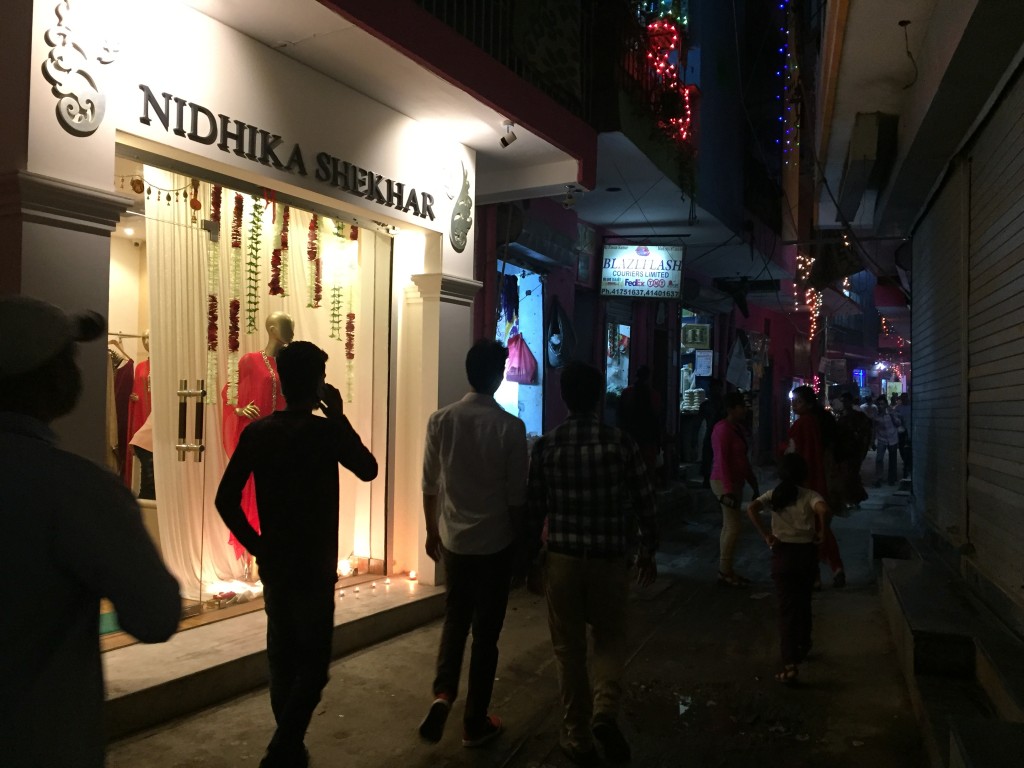
I have been there once before for a little while, when I had to meet an architect friend who also had a boutique there. The village appealed to me on my first visit itself and I left the place, promising myself that I would return soon.
I did it a few days ago with an intention to look at everything around carefully and from an Urban Design perspective.
It is right to call it an Urban Village, because there is an almost equal division in the class of the population living there. Villagers own the properties and Urbane (Elite class) lease them for their boutiques, studios and cafes. If it gives an impression that the properties are available cheap at Shahpur Jat Village, you are wrong. A tiny boutique measuring about 30 Sq.M. would cost somewhere around seventy thousand Indian rupees per month.
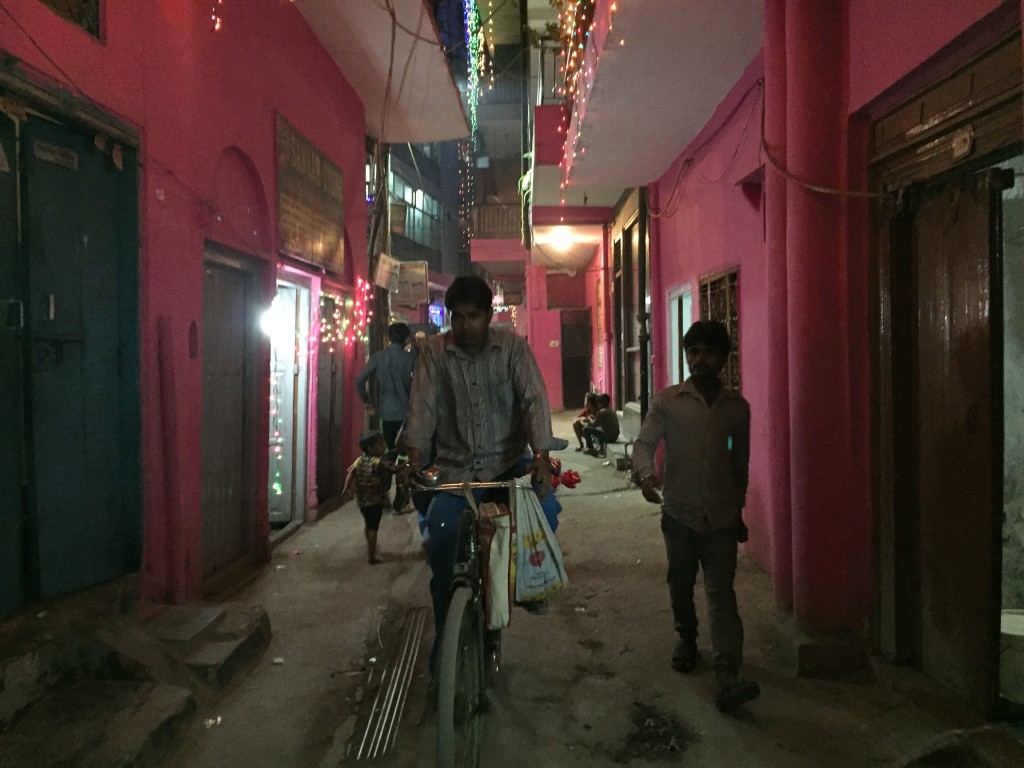
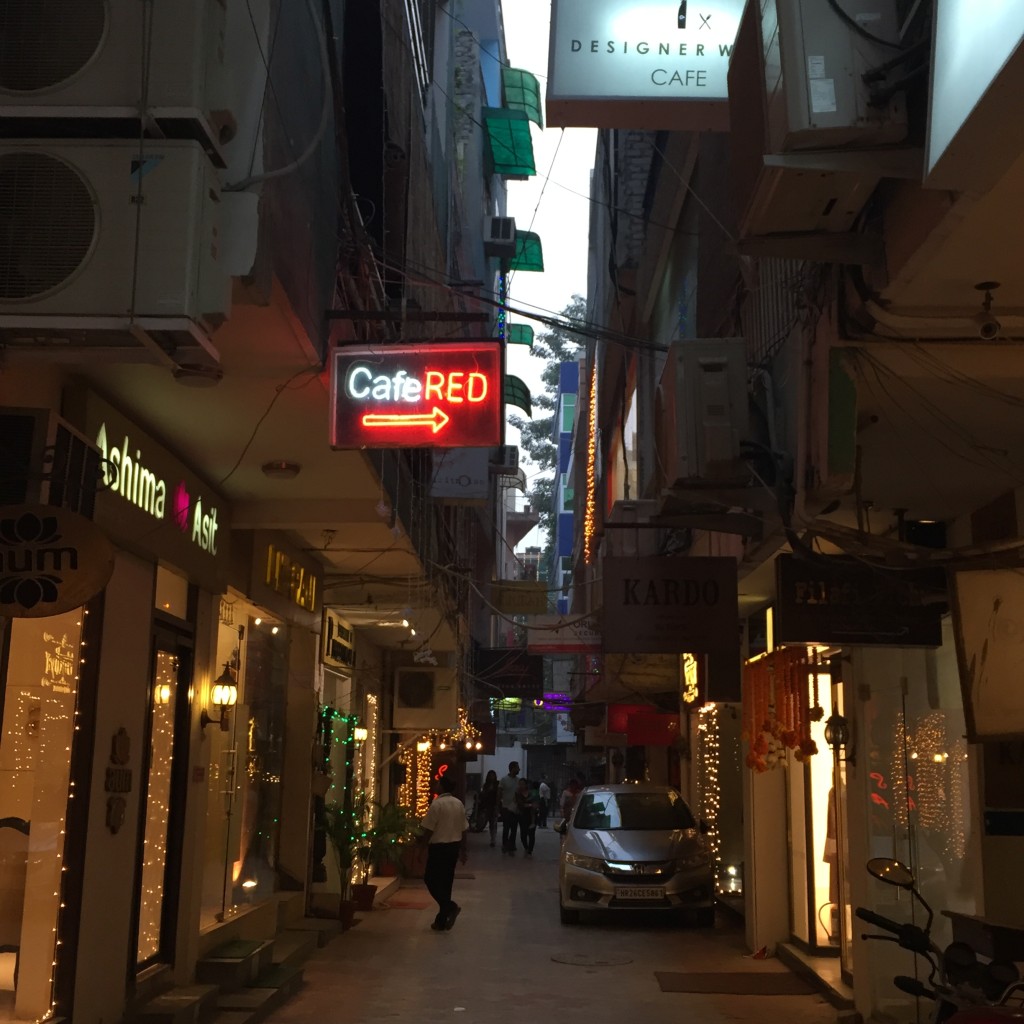
From the entrance to the village, it would appear that the village holds an equal importance that of the ASIAD games Village. Yes, for elite class it is an important place to own boutiques, studios and cafes and also for visitors from the same class. Shahpur Jat is a charming network of narrow and meandering lanes, which would make it difficult for cars to enter. Hence, much of it is workable and provides a marvelous opportunity to look around from human eye level.
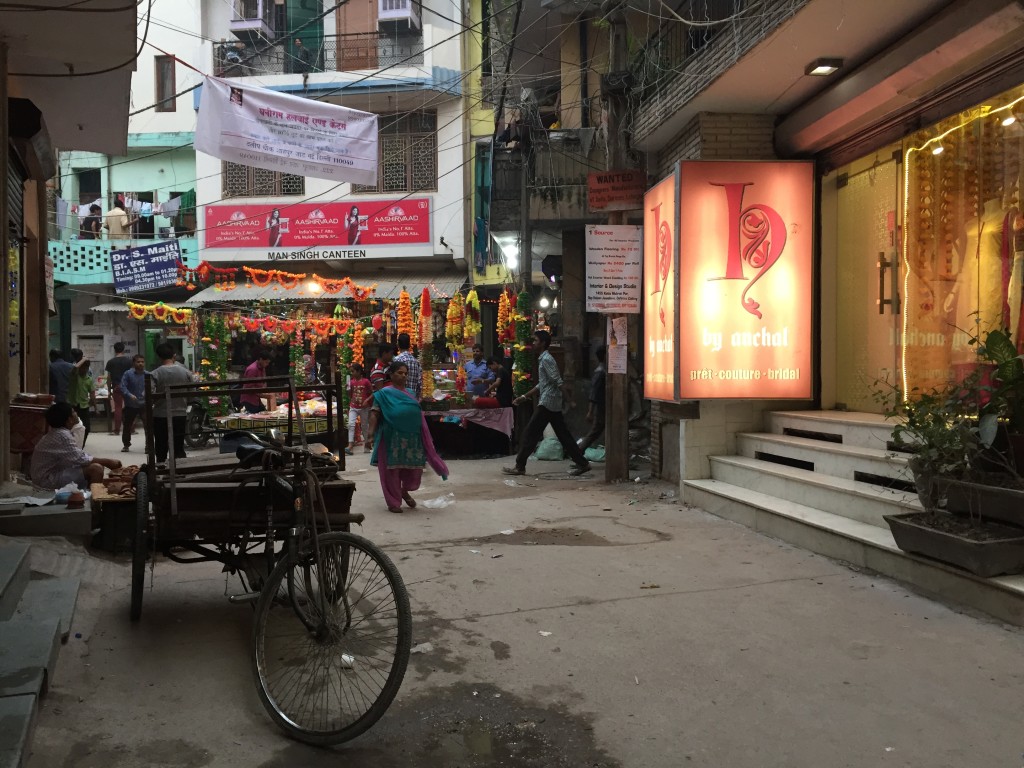
One would notice a contrasting texture of glass facades and unkempt brick fronts of houses. It doesn’t end there. Visuals continue to be a feast of contrasting elements like small grocery shops abutting a high end cafe and villagers roaming around freely on narrow paths sporting designer studios on either side.
Many small businesses, like tailoring shops and dyeing are distinctively visible within the same cone of vision that includes high end boutiques and showrooms.
I happen to chit chat with a local person there, who should be in his late twenties. He shared that he doesn’t really do anything for living. All his income comes from the rent that he receives from the boutique owners there. One would wonder, what value these young people with no real work to do, are adding to the society?
However, these contrasting cultures in the village have not done any harm to the harmonious life people are living. On the contrary, the contrast has led to a vibrant ‘rurban’ set up which portrays a glorious example of co-existence.
This picture was taken last year. Diwali wishes to all Indians.

With whatever little I know about the method of doing dissertation, what I am able to make out from this exercise is that students must be exposed to the processes of research, which includes data collection and analysis. To be able to do this students must select one topic to be studied in depth and start with a ‘hypothesis’.
Hypothesis, is an essence of any dissertation. It lets you start the process in some direction. Hypothesis is based on certain assumptions and all the evidence that one may already have. Unfortunately, in many cases, students are already convinced about the hypothesis and its conclusion. So their research is more focussed on proving the hypothesis right than wrong. They consciously ignore, eliminate and avoid the path that disagrees with their hypothesis.
Hypothesis may not only end with YES or NO. There could be something neutral, mean or beyond that. PO. PO was coined by Edward De Bono, which looks beyond YES and NO. PO, lets you explore more possibilities than just YES and NO, sometimes resulting into something unimaginable.
Teachers, guides and students must explore the possibilities of PO. Not having an answer at the end, or having a mean, or having a very different answer than Hypothesis is alright.
 “Trafficjamdelhi” by NOMAD – http://www.flickr.com/photos/lingaraj/2415084235/sizes/l/. Licensed under CC BY 2.0 via Wikimedia Commons.
“Trafficjamdelhi” by NOMAD – http://www.flickr.com/photos/lingaraj/2415084235/sizes/l/. Licensed under CC BY 2.0 via Wikimedia Commons.
This morning I was supposed to meet an important person who holds a very high position in the Indian Government office. The discussion would have only lasted about 15-20 minutes, I am sure. Considering the traffic in Delhi in morning hours, the time spent commuting would have been about three hours. Three hours of commuting for fifteen minutes of meeting. Waste of 150 minutes. But, the matter was important and the appointment was set.
I decided to call up the person in morning to confirm the meeting before starting from home, as many times I have experienced the last-minute cancellations specially with people from Government offices. The person on other end asked my location and the time it will take for me to reach his place. After hearing my answers, he asked me promptly “Can’t we then just discuss it over phone?” I was surprised. I never saw that coming. Seriously. Matter was equally important for him. He surely wasn’t trying to avoid meeting me. In fact the matter was more important for him than me.
He continued, “You can later send me an email on whatever we have discussed. I will look into the matter.”
I agreed happily. We talked for about 10 minutes on the matter, and the meeting was over.
Now, if only we could do justice to the technology around us, we will save many man hours every day that can be put to better use. Surely, we will also be helping environment a lot.We have phones, Skype, emails and more where meetings could happen. We will be causing lesser traffic jams, and frustration thus health problems.
